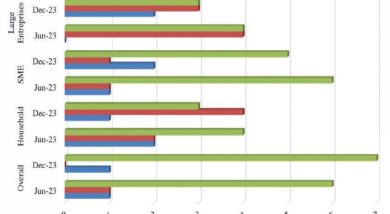World bank cautions on Long-term borrowing
The World Bank has warned against continued over-reliance on long-term Treasury notes (T-notes) when borrowing domestically, saying such a trend will increase the domestic debt servicing burden.
Domestic debt is currently at K2.4 trillion or 57 percent of the country’s total public debt stock.
The Bretton Woods institution’s concern comes at a time Capital Hill is paying more in terms of interest payments on its debt stock, with the K2.2 trillion 2020/21 National Budget allocating K376 billion, or 5.3 percent of gross domestic product (GDP) in interest payment.
This is an increase of 43.8 percent from the 2019/20 fiscal year’s preliminary outturn.

“As of October 2020, 86 percent of domestic debt was held in longer term Treasury notes. However, high and increasing yields for Treasury notes, ranging from 16 to 22 percent, will increase the debt servicing burden for domestic debt,” said the bank in the 12th edition of the Malawi Economic Monitor (MEM) titled Doing More With Less: Improving Service Delivery in Energy and Water launched virtually on Tuesday in Lilongwe.
The breakdown is that foreign interest payments have been projected at K11.9 billion while domestic debt interest payments projected at K364.2 billion.
While Treasury bills (T-Bills) mature in a year or less, T-notes have maturity period of between two and 10 years.
However, T-notes, though long-term in nature, are expensive instruments on the market as compared to short-term T-bills.
Experts, including the World Bank, have since warned that the situation would see taxpayers paying high interest for the instruments at a time the country’s fiscal space has been heavily squeezed amid declining revenue collection.
Reads the MEM in part: “Commercial banks continue to be the largest holder of government’s domestic debt securities.
“Increasing public debt could have negative implications on the economic recovery due to the crowding out of resources needed for private sector investment.”
By June 2020, T-notes dominated the country’s domestic debt portfolio, claiming 89 percent of Malawi’s total portfolio and with T-Bills and promissory notes coming second and third at 11 and less than one percent, respectively.
Speaking virtually from Newy York, USA during the MEM launch, World Bank senor country economist (Malawi office) Patrick Hettinger maintained that the country is at high risk of overall debt distress due to high levels of domestic debt contracted at high interest rates and moderate risk of external debt distress, with limited space to absorb shocks.
He said: “The government has been running high fiscal deficits, which are largely financed with high cost domestic securities.”
Hettinger cited the September 2020 debt sustainability analysis, which indicated how debt servicing costs have increased to 35 percent of revenue and grants in the 2019/20 financial year.
“Due to an anticipated slower export recovery, the debt-to-exports ratio is projected to deteriorate, thereby narrowing the capacity to absorb shocks,” he warned.
Echoing Hettinger’s observation, Economics Association of Malawi president Lauryn Nyasulu, who was one of the panellists during the launch, advised Treasury to have hard choices at a time the country’s fiscal space has been narrowed in view of dwindling revenues due to Covid-19 pandemic.
Recently, Oxfam in Malawi also expressed its concern over sky-rocketing cost of servicing debt by government, which it says is “sucking away” precious revenues to fight inequality.
Meanwhile, International Monetary Fund has projected that the country’s total public debt stock, currently at K4.1 trillion, or half of the nominal GDP, will likely hit 78 percent of the country’s total wealth as measured by GDP in 2021, a movement from the current 65 percent of the total wealth.




